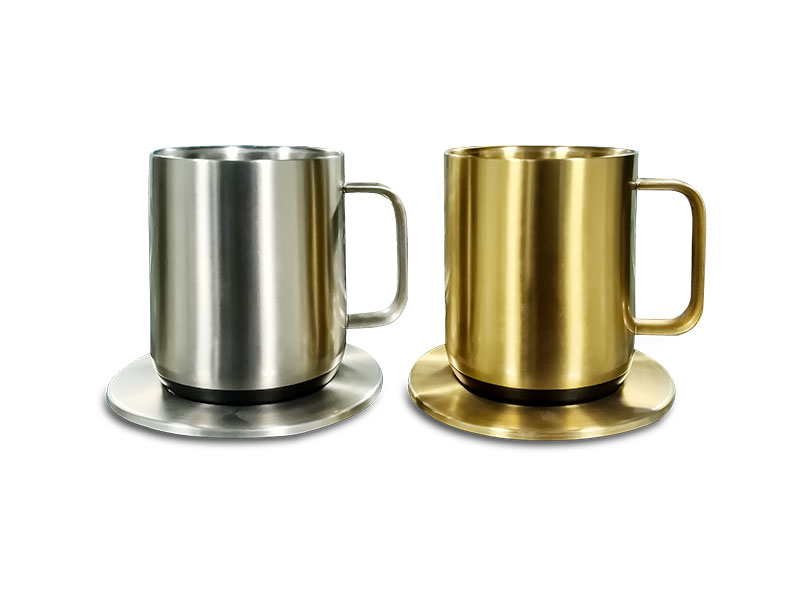When we talk about thermostatic cups, what we are actually discussing is not the cups themselves, but the "energy warehouse" or "thermal battery" hidden inside them. The core of this warehouse is phase change materials.
I. What is phase change Material (PCM)?
Phase Change Material (PCM) is a kind of substance that can undergo physical state changes (such as from solid to liquid, or from liquid to solid) at a specific temperature, and absorb, store or release a large amount of latent heat in this process.
A most down-to-earth example is "ice" :
When ice (solid) melts into water (liquid), it absorbs a large amount of heat from the surrounding environment, and its temperature remains constant at 0°C.
When water (in liquid form) solidifies into ice (in solid form), it releases a large amount of heat and its temperature remains unchanged at 0°C.
The constant-temperature cup utilizes precisely this principle, except that the phase change temperature is changed from 0°C to around 55°C, which is more suitable for drinking.
Ii. How does PCM work in a constant temperature cup?
The structure of a constant temperature cup is usually divided into three layers: inner liner, PCM filling layer and outer shell.
"Charging" energy storage (heat absorption process)
When you pour boiling water (90-100°C) into the cup, the high-temperature hot water transfers heat to the PCM layer through the stainless steel inner liner.
When the temperature of PCM reaches its melting point (for example, 55°C), it begins to melt and changes from solid to liquid.
This melting process absorbs and stores a huge amount of heat, which is equivalent to charging a "thermal battery". Due to a large amount of heat being instantly absorbed, the temperature of the boiling water in the cup will drop rapidly and significantly to around 55°C, making it drinkable immediately.
"Discharge" at a constant temperature (exothermic process
When you start drinking, the water temperature in the cup will gradually drop due to the environment.
When the water temperature drops to 55°C, the liquid PCM begins to solidify and changes from liquid to solid.
This solidification process will steadily release the heat it previously stored, continuously replenishing the water in the cup with heat and offsetting the loss of heat.
Thus, before the water temperature drops below 55°C, the exothermic process of PCM can keep the water temperature anchored at around 55°C for a long time, achieving true "constant temperature".

Iii. Why 55°C? How is PCM selected?
The selection of 55°C for the constant temperature cup is no accident; it is a scientific setting based on multiple considerations:
Suitable for consumption: 55°C is the ideal temperature for a warm taste without burning the mouth. It is very suitable for direct consumption, making tea, brewing coffee or preparing milk powder for babies.
Materials science: It is necessary to find a material with a melting point of around 55°C, high latent heat value, stable chemical properties, non-toxic and harmless, and recyclable for thousands of times through precise formulation.
What is the PCM usually in a constant temperature cup?
It is not a single substance but a food-grade Organic Paraffin Wax. By adjusting the carbon chain length and mixing different types of wax, engineers can precisely "customize" its melting point and ensure its safety, efficiency and long service life.
Iv. PCM Constant Temperature vs. Traditional Vacuum Insulation
This is a key distinction. Once you understand it, you will grasp the true value of PCM.
Traditional vacuum insulated cup PCM constant temperature cup Principle of Effect: The water temperature first drops rapidly to 55°C and then remains at this temperature for a long time. "Temperature preservation" (adjusting and maintaining liquids of different temperatures at a fixed temperature)| Characteristics | Traditional vacuum insulated cup | PCM constant temperature cup |
| Principle | Isolate heat transfer (physical insulation) | Regulate heat transfer (dynamic energy balance) |
| Effect | The water temperature keeps dropping slowly. It's very hot at first, but it will cool down if left for a long time. | The water temperature first drops rapidly to 55°C and then remains at this temperature for a long time. |
| Objective | Maintain "heat" (keep the temperature of the injected liquid at the time of injection) | Maintain "temperature" (regulating and keeping liquids of different temperatures at a fixed temperature) |
In simple terms:
If you pour boiling water into a vacuum thermos, after 6 hours, it may still be at 70°C and still scalding hot.
Pour boiling water into the PCM thermostatic cup. After a few minutes, it will drop to 55°C and remain at this temperature for the next few hours.
V. Advantages and Limitations of PCM Technology
Advantages
No energy required: No need to plug in or charge, only utilizing physical principles, safe and reliable.
Intelligent temperature adjustment: Automatically adjust overheated water to the optimal drinking temperature.
Long-lasting constant temperature: The heat preservation time at the optimal temperature point exceeds that of traditional thermos flasks for a long time.
Limitation
Fixed temperature: The constant temperature is determined by the melting point of PCM and cannot be adjusted by users themselves (currently, it is mostly 55°C).
Activation is required: Sufficient hot water (usually above 70°C) must be poured in to fully activate the phase change process of PCM. Pouring in cold water does not work well.
Initial cooling: For those who want to drink extremely hot liquids immediately, the initial rapid cooling process may be a "drawback".
Summary
Phase change material (PCM) is the soul of the constant temperature cup. It ingeniously employs fundamental physical principles to store the excess energy in "overheated" water and then gently release it back when the water temperature drops. The essence of this "black technology" is not to create energy, but to act as an energy transporter and a time freeze, allowing you to always have that just-right sip of warm water when you need it.